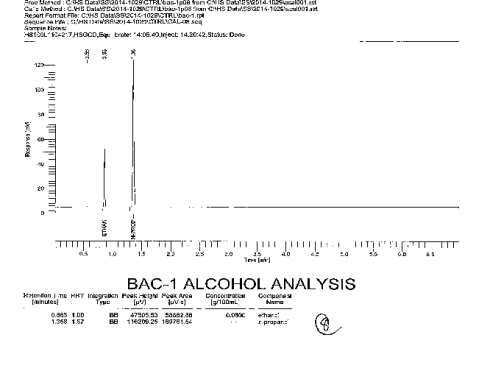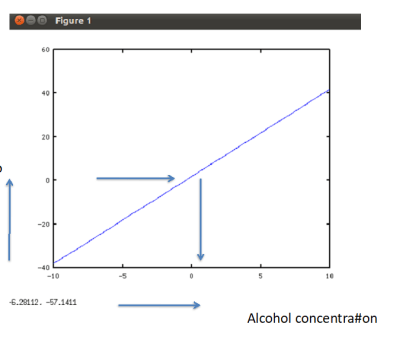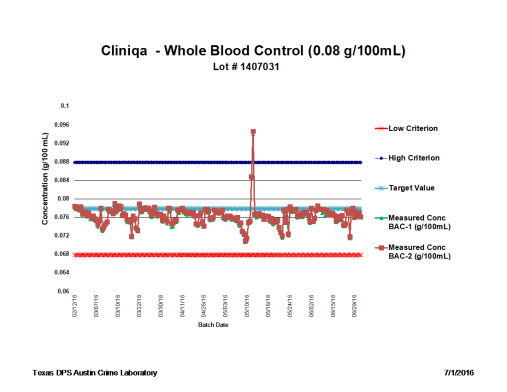Testing on the Machine
(Perkin-Elmer Clarus 500 and TurboMatrix)
After a laboratory purchases a gas chromatograph, a Perkin Elmer employee comes to the site to set it up, and he tests it to assure that it is in working order. After all, it costs about $75,000. Nevertheless, the DWI lawyer should know that it is the laboratory’s duty to establish its own analytical method to run on the machine. Without that analytical method the machine would not know what to do.
“What are ya doin’?” It says. “GC?” “GC/MS?” “GC/FID? ‘Sup?”
Additionally, the method must be “validated,” meaning that the overall handling of the DWI testing process must be shown to be accurate and scientifically reliable.
The laboratory’s method is all encompassing in its scope, and it has to comply with rules set down by ISO/IEC 17025, an international standards organization that sets the standards for the WHOLE WORLD for calibration and testing laboratories. (Go to the website and see if you can copy anything on it or download anything of use without paying and registering. Let me know if you can, okay? On second thought don’t, because it was probably illegal.)
When you get your discovery (as a DWI lawyer) from the lab, they will show you their certification, and even though it is through another certification agency, that agency relies on the DPS lab’s compliance with ISO/IEC 17025. Without that compliance, the lab’s work is not scientifically acceptable. (We will see more of that in future blogs.)
So the DPS lab does more than blood/alcohol testing, of course. The DPS laboratory method and standard operating procedures covers a broad scope of investigative procedures for a state crime lab, but here we are dealing with only that portion of the method that deals with blood/alcohol testing.
For blood/alcohol the majority of the U.S. labs rely upon GC/FID with something like a turbomatrix to run what is known as a “dual column” testing process. Each person’s DWI sample of blood gets tested twice, at the same time. The gas above the blood in the vial is split between two 90-foot-long capillary tubes ( really small inside space) that have a “carrier gas” constantly going through them. That gas pulls along the gasses from your vial and separates your margaritas from the other gases in the mix. By the time the margaritas reach the end of the 90-foot “column” they are separated from the other gasses, and they go out the end to be burned by the F lame I onization D etector (FID). Then the gas chromatograph prints out a result that looks like this:
The peak area for the margarita is given a number, the bigger number (n-propanol here) is divided into the smaller DWI margarita number in order to give you a “ratio.”
Here comes the method! Then the software goes up the vertical column on this graph below and finds the ratio number, and then it goes across to the diagonal line (the calibration “curve”). It goes straight down from there to the horizontal line at the bottom where we find the DWI alcohol concentration. (This picture is only for humans because software doesn’t see pictures.)
Now, that diagonal line looks kind of – askew. I mean, it doesn’t go through the corner (“0”). That’s okay. That’s really okay! Because it means that the diagonal line has been measured in some way. That line is part of the method, and it is created by “calibrators.” Their amounts are set out in the method. Calibrators are vials of pure water and ethanol mixed at various concentrations (from low to high) that your testing machine has measured before, during and after your test in order to create this diagonal line. The line is made by connecting the dots created where their ratios and their NIST (see previous blogs) concentrations meet on the graph -from the lowest amount measured through several other points on the way to the top of the curve: .01, .08, .15, .30, .50 and so on. So your DWI margaritas come through the machine and they meet that diagonal line set by the calibrators and they go down to find your alcohol concentration for your DWI trial.
BUT, for years the DPS lab has created that diagonal line by taking only one point: .08 and forcing it through the corner: “0.” Their only measurement was .08. The national forensic organizations say:
“Hey, don’t do that.”
However, DPS said,
“No, we are going to do that, but every six months or so we will test our machine (not our defendants) to see if the machine is measuring the diagonal line like we think it should be: a straight line from zero to infinity and beyond !”
Besides, their experts have testified, in DWI trials over and over, that they are not interested in anything below.08, the magic number. In other words the line, the calibration curve in their method, was purely theoretical. It wasn’t measured! Everyone was tested under a theory that the line was correct. When they did their test every six months or so to see if the line was correct, they didn’t test anyone. And, by the way, they didn’t always test that line every six months as set out in the method. So, in all those batches how many people were theoretically DWI?
“Okay,” you say. “These machines are accurate, and they don’t vary that much from month to month so there isn’t any a harm in relying on them to measure the alcohol concentration.”
Dude, it’s not the machine I’m concerned about. It’s the analysts ! It’s the people who prepare the controls and the calibrators – the ones who run the batch.
(LC GC’s Chromacademy, http://www.chromacademy.com last visited July 30, 2018)
It is the measured control that can change the value of the calibration curve. There is no measured point below the .08 to secure the curve when you use a theoretical calibration.
Look at the variance of this “control” over time. Each square is a batch of 50 people with their calibrators and controls, including this one. There is no straight line. Every square is different: higher or lower. Sometimes the controls go way out of range. You can’t rely on theory here for your calibration curve. You need real world measurements or someone gets screwed in their DWI case.
“Okay, calm down,” you say. “DPS has fixed it. Now they use a multipoint calibration curve like the national organizations say they should.” Yes, now they do. Starting in late 2016 they began dropping the theoretical curve. However, for the previous 15 years and in thousands upon thousands of tests the lab was defying the national standards. Was that method or madness?




